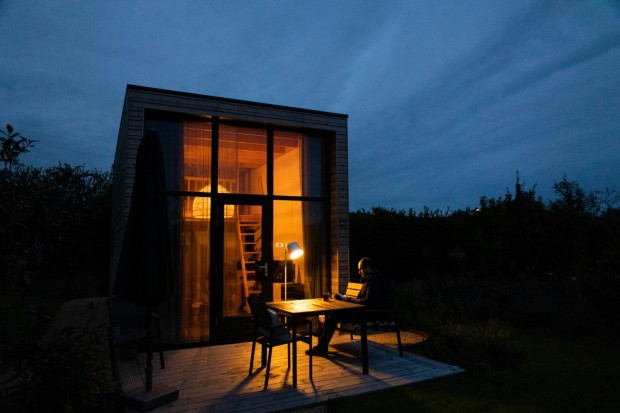Constructing an off-grid house presents unique challenges due to its isolation from public utilities. It also requires careful planning and consideration of self-sustaining energy sources. Nevertheless, designing the home with passive solar principles and energy-efficient materials can further enhance its sustainability and resilience in off-grid environments.

(Photo : Unsplash/Aysegul Yahsi )
Legal Considerations While Living Off-grid
You need to be familiar with local building codes and criteria before you begin construction. If you want to avoid high costs, you should do research on them before selecting a plan. As an illustration, if you are considering going solar, you should first ensure that you are located in a solar-allowing zone and then submit an application for the approval of your project.
Establishing your septic system requires approval, also known as a permit in some areas. Also, you will be required to pay property taxes annually if this is permitted in your state.
Insuring Your Off-grid Home
When constructing an off-grid structure, homeowner's insurance remains essential. In most cases, the danger of fire, flood, and other hazards is comparable to what it would be if you lived in a more conventional house. Obtaining an insurance policy through a traditional financial institution is becoming less complicated as the number of people living off-grid continues to rise. Some of these institutions even provide customized plans explicitly tailored for off-grid residences.
Find the Right Location
It is necessary to conduct a land survey to determine the ideal location for your house before you can begin construction. Accordingly, essential factors to consider include wind protection, orientation, shading that affects solar energy, and building supply accessibility. In addition, you will need to consider the various alternatives available to you regarding what you may construct about the restrictions in place in the region, whether or not it is possible to obtain insurance, and how it will be carried out.
Also Read: Why Are Floor Plans Essential in Design and Construction?
Build the Smallest Home Possible
When it comes to living off the grid, tiny homes are not only adorable and on-trend, but they are also the most rational and effective arrangement. They are simpler to heat, occupy less space on the land, and consume less energy and water. Although it is evident that you are free to make your house as big as you like, you should be aware that it will necessitate more extensive and more expensive heating and electrical systems.
Consider adopting a minimalist approach to your new way of life by eliminating unnecessary possessions and developing areas that may serve multiple purposes, allowing you to maintain your comfort level. Ensure that you take advantage of vertical space, clever storage approaches, features that can be converted, and a straightforward kitchen arrangement.
Design for Passive Heating and Cooling
Passive solar is a frequently misconstrued expression. Unlike a solar electrical system, passive solar does not involve the use of solar panels or batteries. It pertains to the direction of a house as well as its design. Preserving heat in the winter and coolness in the summer is the main goal of using this cutting-edge technology.
Related Article: 6 Unique Roof Designs for Your Dream Home







